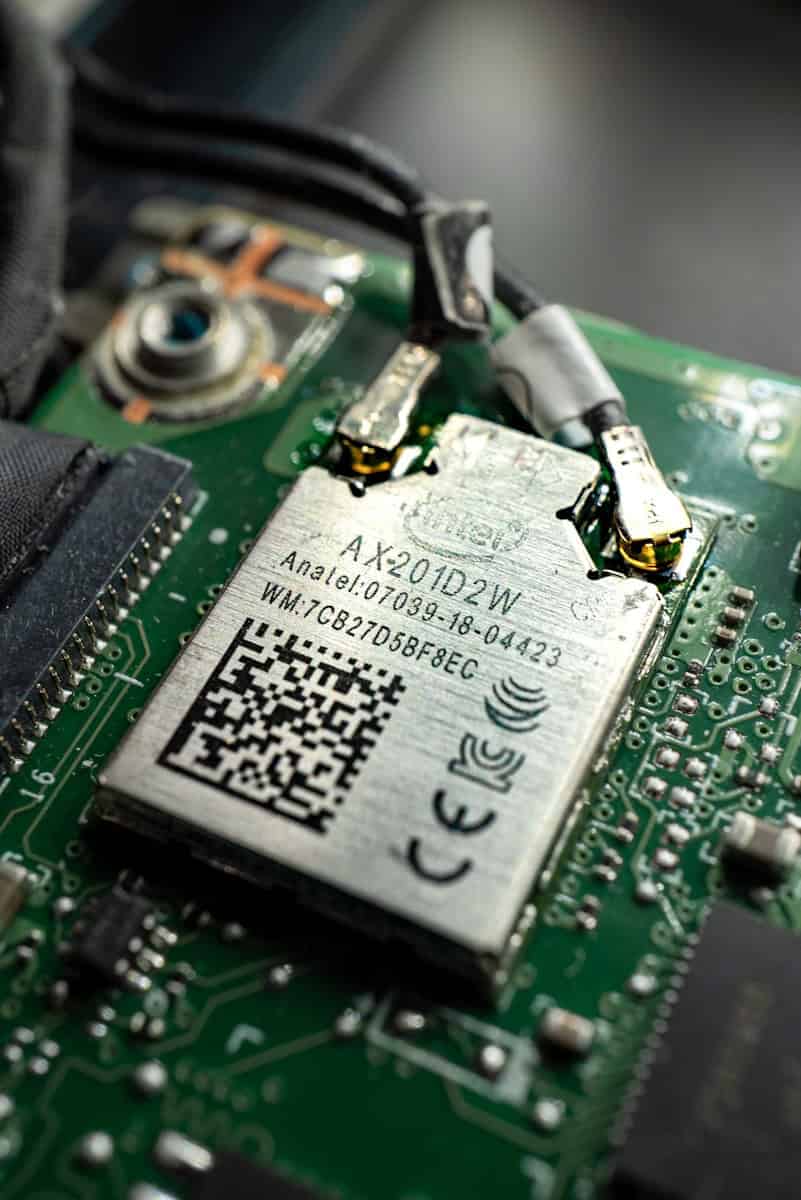WPA2/WPA3-Personal improves Wi-Fi security for your home network. This option combines the well-known WPA2 with the newer and safer WPA3 standard. By using WPA2/WPA3-Personal, your network is protected against common wireless threats while still working with older devices. Protecting your home Wi-Fi is essential due to rising cyber threats.
Upgrading to WPA2/WPA3-Personal is easy. Most modern routers support this setting, allowing you to strengthen your network’s security without buying all new devices. You will get better encryption and stronger protection against password guessing attacks. While WPA3 is the newest standard, not all devices support it yet. WPA2/WPA3-Personal lets you enjoy WPA3’s improvements whenever possible while still connecting your older devices.
This article gives a straightforward overview of WPA2-Personal and WPA3-Personal, the two main Wi-Fi security protocols for home use. It details their key differences and guides you in choosing the best one for your needs. It also offers practical tips to enhance your Wi-Fi security and discusses the latest developments in wireless technology.
| Feature | WPA2-Personal | WPA2/WPA3-Personal |
|---|---|---|
| Compatibility | High | High |
| Security | Good | Better |
| Future-proof | No | Yes |
Securing Your Home Wi-Fi: WPA2 vs. WPA3-Personal
Understanding Wi-Fi Security
Wi-Fi security protocols protect your home network from unauthorized access. They encrypt your internet traffic, making it difficult for hackers to steal your personal information. WPA2 (Wi-Fi Protected Access 2) has been the standard for many years, but WPA3 (Wi-Fi Protected Access 3) is now becoming more common.
WPA2-Personal
WPA2-Personal is a widely used security protocol. It uses a pre-shared key (PSK), which is essentially your Wi-Fi password. This password encrypts your internet traffic, making it difficult for others to access your network.
WPA3-Personal
WPA3-Personal is the latest Wi-Fi security protocol. It offers several improvements over WPA2, including:
- Stronger encryption: WPA3 uses a more robust encryption algorithm, making it even harder for hackers to crack your password.
- Protection against brute-force attacks: WPA3 makes it more difficult for hackers to guess your password by trying many different combinations.
- Easier connection for devices without a display: WPA3 includes a feature called “Easy Connect” that simplifies the process of connecting devices that don’t have a screen, such as smart home devices.
WPA2 vs. WPA3-Personal: Key Differences
| Feature | WPA2-Personal | WPA3-Personal |
|---|---|---|
| Encryption | AES-CCMP | AES-GCMP-256 |
| Key exchange | 4-way handshake | Simultaneous Authentication of Equals (SAE) |
| Brute-force protection | Limited | Improved |
| Open network encryption | No | Yes, with Opportunistic Wireless Encryption (OWE) |
Which Protocol Should You Use?
If your router and devices support it, WPA3-Personal is the recommended choice. It offers stronger security and improved features. However, if your devices don’t support WPA3, WPA2-Personal is still a secure option.
Checking Your Devices and Router
- Router: Check your router’s documentation or settings to see if it supports WPA3-Personal.
- Devices: Look for “WPA3” or “Wi-Fi 6” in your device’s Wi-Fi settings.
Tips for Strong Wi-Fi Security
- Use a strong password: Choose a password that is at least 12 characters long and includes a mix of uppercase and lowercase letters, numbers, and symbols.
- Update your router’s firmware: Firmware updates often include security patches.
- Enable a firewall: A firewall can help protect your network from unauthorized access.
- Consider a VPN: A VPN encrypts all your internet traffic, providing an extra layer of security.
Understanding Wi-Fi Generations
Wi-Fi technology has evolved over the years. Different Wi-Fi generations offer different speeds and features.
- Wi-Fi 4 (802.11n): Released in 2009.
- Wi-Fi 5 (802.11ac): Released in 2014.
- Wi-Fi 6 (802.11ax): Released in 2019.
- Wi-Fi 6E (802.11ax): Released in 2020. Operates in the 6 GHz band.
- Wi-Fi 7 (802.11be): Expected to be released in 2024.
Newer Wi-Fi generations generally offer faster speeds, improved range, and better performance in crowded environments.
Understanding WPA2 and WPA3 Personal
WPA2 and WPA3 Personal are Wi-Fi security protocols designed to protect home and small business networks. These standards offer different levels of encryption and authentication methods to safeguard your wireless connections.
The Evolution from WPA2 Personal to WPA3 Personal
WPA2 Personal, introduced in 2004, uses AES encryption with a 128-bit key. It relies on a pre-shared key (PSK) for network access. While effective, WPA2 has vulnerabilities to offline dictionary attacks.
WPA3 Personal, launched in 2018, enhances encryption strength with Simultaneous Authentication of Equals (SAE). This method replaces the PSK system, making it harder for attackers to guess passwords.
WPA3 also adds Forward Secrecy, which protects past sessions even if the current one is compromised. This feature significantly improves your overall Wi-Fi security.
Key Differences and Enhancements
| Feature | WPA2 Personal | WPA3 Personal |
|---|---|---|
| Encryption | AES 128-bit | AES 128-bit |
| Key Exchange | 4-way handshake | SAE (Dragonfly) |
| Password Strength | Vulnerable to weak passwords | Resistant to weak passwords |
| Offline Attack Protection | Limited | Strong |
WPA3 Personal offers better protection against password guessing attempts. It uses SAE to prevent attackers from making multiple guesses based on a single connection attempt.
Wi-Fi Easy Connect in WPA3 lets you add devices to your network by scanning a QR code. This simplifies the process of connecting new devices while maintaining security.
WPA3 is backward compatible with WPA2 devices. You can enable a transitional mode on your router to support both standards. This allows you to upgrade your network security while still accommodating older devices.
Encryption and Authentication Mechanisms
WPA2-Personal and WPA3-Personal use different methods to secure wireless networks. These protocols employ encryption and authentication to protect data and prevent unauthorized access.
Pre-Shared Key (PSK) and Simultaneous Authentication of Equals (SAE)
WPA2-Personal relies on Pre-Shared Key (PSK) for authentication. You set up a password on your router and devices use this to connect. PSK is simple but can be vulnerable to offline dictionary attacks.
WPA3-Personal improves security with Simultaneous Authentication of Equals (SAE). SAE uses a more secure handshake process. It protects against password guessing even if an attacker captures network traffic. This gives you stronger protection for your Wi-Fi network.
Advanced Encryption Standard (AES) and 192-Bit Security
Both WPA2 and WPA3 use Advanced Encryption Standard (AES) for data encryption. AES is highly secure and efficient. It keeps your data private as it travels over the air.
WPA3 enhances security further with 192-bit encryption in its Enterprise mode. This offers even stronger protection against brute-force attacks. WPA3 also provides forward secrecy. This means old data stays secure even if your current key is compromised.
| Feature | WPA2-Personal | WPA3-Personal |
|---|---|---|
| Authentication | PSK | SAE |
| Encryption | AES (128-bit) | AES (128-bit) |
| Offline Attack Protection | Limited | Strong |
| Forward Secrecy | No | Yes |
Security Measures and Protocols
WPA2/WPA3-Personal employs advanced security features to protect Wi-Fi networks. These measures safeguard against common attacks and enhance data privacy for users.
Protected Management Frames (PMF) and Opportunistic Wireless Encryption (OWE)
PMF encrypts management frames in Wi-Fi networks. This prevents eavesdropping and unauthorized access attempts. OWE provides encryption for open networks without a password.
PMF is mandatory in WPA3. It guards against deauthentication attacks. These attacks can disconnect users from networks. OWE improves security on public Wi-Fi. It encrypts traffic between devices and access points.
Here’s a comparison of PMF and OWE:
| Feature | PMF | OWE |
|---|---|---|
| Purpose | Protects management frames | Encrypts open networks |
| Mandatory in | WPA3 | Optional |
| Main benefit | Prevents deauthentication attacks | Enhances public Wi-Fi security |
Enhanced Protections Against Attacks
WPA3 introduces stronger safeguards against common Wi-Fi threats. It uses Simultaneous Authentication of Equals (SAE) to replace the Pre-Shared Key (PSK) in WPA2.
SAE offers better protection against dictionary attacks. It makes password guessing much harder. WPA3 also includes forward secrecy. This keeps past sessions secure even if the current one is compromised.
Brute force attack protection is significantly improved in WPA3. The protocol limits the number of password guess attempts. This feature is especially useful for devices with weak passwords.
For backwards compatibility, WPA2/WPA3 transitional mode exists. It allows older devices to connect while newer ones benefit from enhanced security.
Compatibility and Transition Strategies
WPA2/WPA3-Personal transition involves balancing device compatibility with enhanced security features. This process requires careful planning and implementation to ensure seamless connectivity across diverse networks and devices.
Interoperability Between Devices and Networks
WPA3-Personal offers improved security over WPA2 but may not work with all devices. Older hardware often lacks WPA3 support, creating compatibility challenges. To address this, many Wi-Fi routers now support a mixed mode called WPA2/WPA3 Transitional.
This mode allows WPA3-capable devices to use the newer protocol while maintaining backwards compatibility for WPA2 devices. Here’s a quick comparison:
| Feature | WPA2-Personal | WPA3-Personal | WPA2/WPA3 Transitional |
|---|---|---|---|
| Security | Good | Better | Better |
| Compatibility | High | Limited | High |
| Ease of setup | Easy | Moderate | Moderate |
Wi-Fi 6 (802.11ax) devices typically support WPA3 out of the box. However, many IoT devices still rely on WPA2 due to hardware limitations.
Implementing Transitional Security Frameworks
To smoothly transition from WPA2 to WPA3, you can take several steps:
- Update router firmware to support WPA2/WPA3 Transitional mode.
- Enable the transitional mode on your Wi-Fi network.
- Gradually replace older devices with WPA3-compatible alternatives.
WPA3 introduces new features like Simultaneous Authentication of Equals (SAE) for stronger protection against password guessing attacks. The Device Provisioning Protocol (DPP) simplifies the setup of IoT devices without displays.
For networks with a mix of devices, using different SSIDs for WPA2 and WPA3 can help manage security settings. This approach allows you to maintain separate networks with appropriate security levels for different device types.
Frequently Asked Questions
WPA2 and WPA3 Personal modes offer different security features and compatibility options for Wi-Fi networks. Understanding their differences and how to implement them can help you make informed decisions about your network setup.
What are the differences between WPA2 Personal and WPA3 Personal?
WPA3 Personal improves upon WPA2 by offering stronger encryption. It uses Simultaneous Authentication of Equals (SAE) instead of Pre-Shared Key (PSK) authentication. This change makes it harder for attackers to guess passwords through offline dictionary attacks.
WPA3 also provides forward secrecy. This means even if an attacker captures encrypted data they can’t decrypt past transmissions if they later obtain the network password.
How can I configure a router to use a combination of WPA2/WPA3 Personal mode?
To set up WPA2/WPA3 Personal mode:
- Access your router’s admin interface
- Find the wireless security settings
- Look for an option labeled “WPA2/WPA3 Personal” or “WPA2/WPA3 Transitional”
- Select this option and save your changes
This mode allows WPA3-capable devices to use the newer protocol while maintaining compatibility with older WPA2 devices.
What are the known disadvantages or limitations of using WPA3?
WPA3 adoption faces some challenges:
- Older devices may not support WPA3, limiting its use in mixed-device environments.
- Some early implementations had bugs that could cause connectivity issues.
- WPA3 can be more demanding on router hardware, potentially affecting performance on older routers.
Are there compatibility considerations when transitioning from WPA2 to WPA3 Personal?
When moving to WPA3:
- Check if your devices support WPA3. Newer devices typically do, but older ones may not.
- Update your router’s firmware to ensure WPA3 support.
- Use WPA2/WPA3 Transitional mode to maintain compatibility with older devices.
Some users report occasional connection issues with certain devices in mixed mode. Test thoroughly after switching.
Is it possible to use both WPA2-PSK AES and WPA3 Personal concurrently, and how?
Yes, you can use both protocols concurrently:
- Enable WPA2/WPA3 Transitional mode on your router.
- This allows WPA3-capable devices to use the new protocol.
- WPA2 devices will automatically connect using WPA2-PSK AES.
This approach provides backward compatibility while offering enhanced security for newer devices.
How does WPA3 Personal improve upon the security features of WPA2?
WPA3 enhances security in several ways:
- Stronger encryption through SAE, making password guessing harder.
- Forward secrecy protects past data even if the current password is compromised.
- Wi-Fi Easy Connect simplifies secure device onboarding using QR codes.
These improvements address vulnerabilities present in WPA2 and provide a more robust security framework for Wi-Fi networks.
| Feature | WPA2 Personal | WPA3 Personal |
|---|---|---|
| Authentication | Pre-Shared Key (PSK) | Simultaneous Authentication of Equals (SAE) |
| Password Guessing Protection | Limited | Enhanced |
| Forward Secrecy | No | Yes |
| Ease of Setup | Standard | Improved with Wi-Fi Easy Connect |
| Device Compatibility | Wide | Limited to newer devices |







